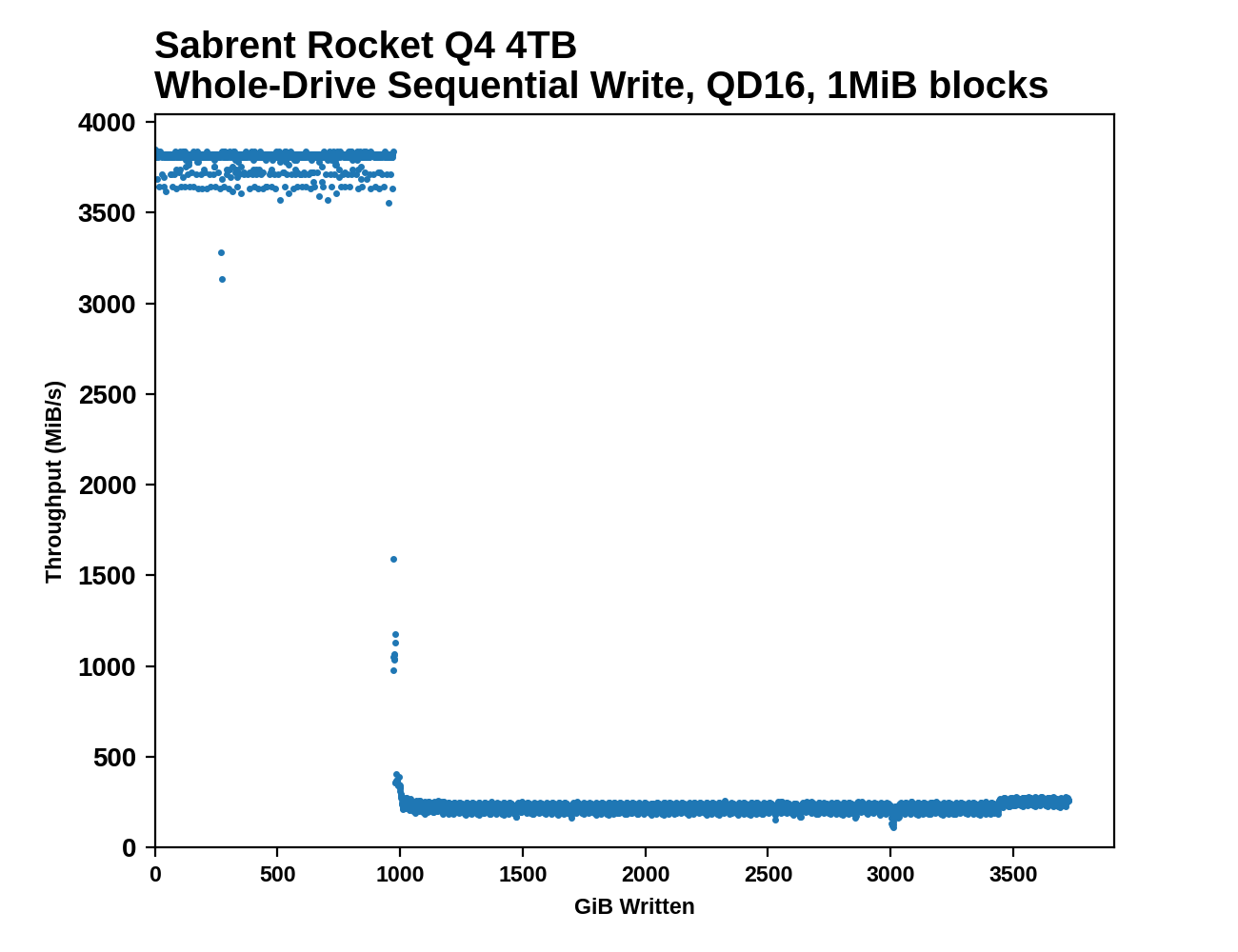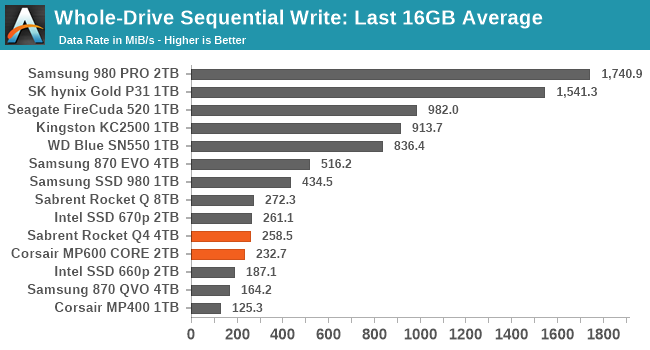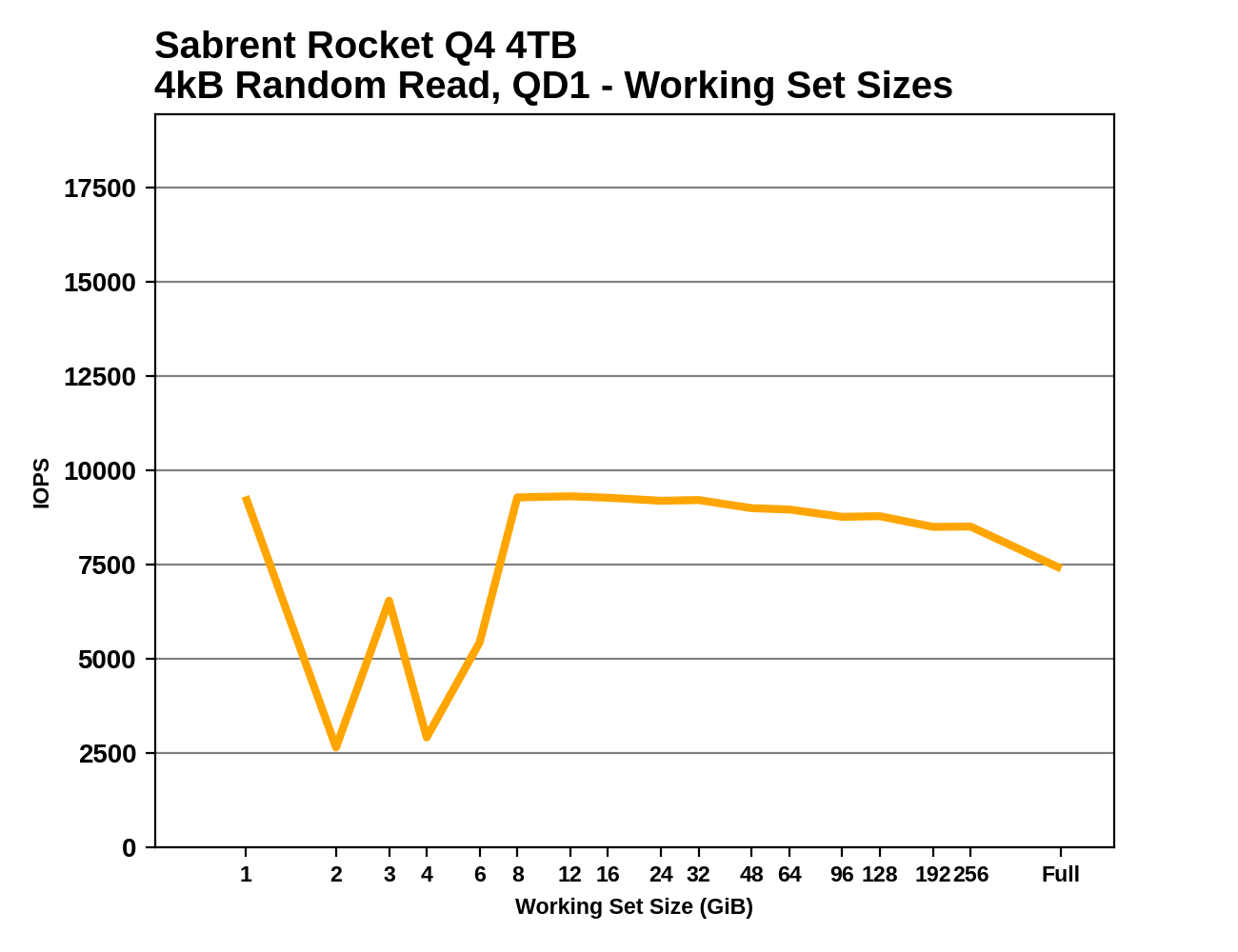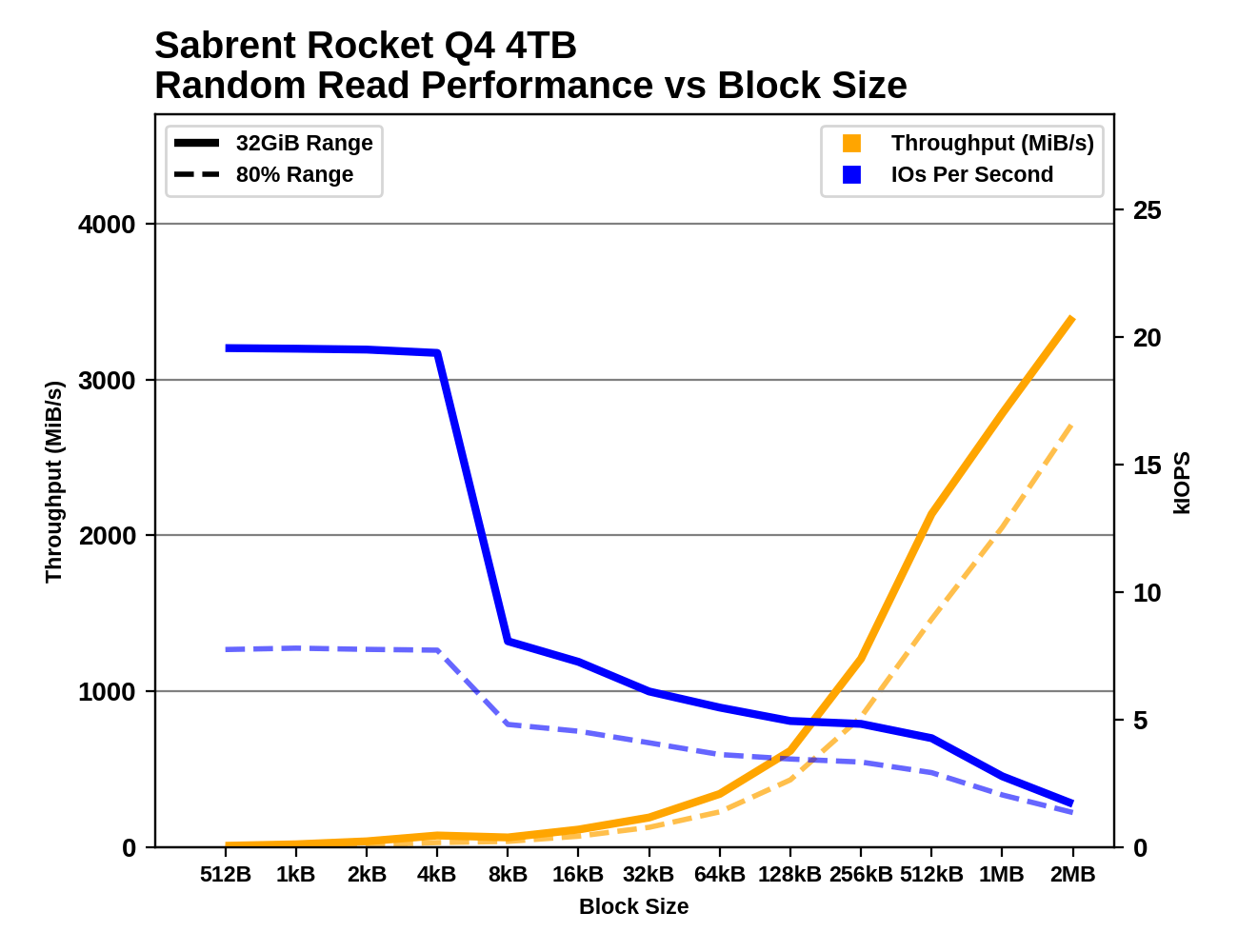Sabrent Rocket Q4 and Corsair MP600 CORE NVMe SSDs Reviewed: PCIe 4.0 with QLC
by Billy Tallis on April 9, 2021 12:45 PM ESTAdvanced Synthetic Tests
Our benchmark suite includes a variety of tests that are less about replicating any real-world IO patterns, and more about exposing the inner workings of a drive with narrowly-focused tests. Many of these tests will show exaggerated differences between drives, and for the most part that should not be taken as a sign that one drive will be drastically faster for real-world usage. These tests are about satisfying curiosity, and are not good measures of overall drive performance. For more details, please see the overview of our 2021 Consumer SSD Benchmark Suite.
Whole-Drive Fill
 |
|||||||||
| Pass 1 | |||||||||
| Pass 2 | |||||||||
As is typical for QLC drives based around Phison controllers, the SLC caches on the Rocket Q4 and MP600 CORE are as large as possible: about 1/4 the usable capacity of the drive. Write speeds to the cache hover around or just above the limit of what a PCIe 3 x4 link could handle, and once the cache is full performance drops down to well below the limit of what a SATA link could handle.
 |
|||||||||
| Average Throughput for last 16 GB | Overall Average Throughput | ||||||||
Both the 2TB MP600 CORE and the 4TB Rocket Q4 have about the same overall write speed, and they're in the middle of the pack of QLC drives: the older 8TB Rocket Q and the more recent Intel 670p both outperform the Phison E16 drives. And all of the TLC drives naturally sustain higher write speeds than any of these QLC drives.
Working Set Size
 |
|||||||||
Both the Rocket Q4 and MP600 CORE have some disappointing performance drops during the working set size test, suggesting there's background work keeping the drives busy despite all the idle time they get before the test and between phases of the test. But aside from that, we see the expected trends: the MP600 CORE has flat overall performance on account of having 2GB of DRAM for its 2TB of NAND, while the Rocket Q4 shows a slight performance decline for large working sets because it's managing 4TB of NAND with the same 2GB of DRAM.
Performance vs Block Size
 |
|||||||||
| Random Read | |||||||||
| Random Write | |||||||||
| Sequential Read | |||||||||
| Sequential Write | |||||||||
The two Phison E16 drives with QLC show similar patterns to the E12 QLC drives, but with substantial performance improvements in several places, most notable for random reads. These drives don't have any issues with block sizes smaller than 4kB, but there are performance drops at larger block sizes where the SLC cache runs out while testing random writes.










60 Comments
View All Comments
ZolaIII - Friday, April 9, 2021 - link
What's the purpose of those? I mean I recently bought MP600 1 TB for the price of MP600 Core same capacity. I didn't bought it for it's speed but it's TBW endurance which is by the way twice as MP600 Core 4GB.This doesn't have any market place in my opinion when you can buy a drive with same controller and same 96 layer but TCL NAND for a same price or just a little bit more money.
SarahKerrigan - Friday, April 9, 2021 - link
Yeah, right now really the only sweet spot for QLC is at 4TB.powerarmour - Saturday, April 10, 2021 - link
Absolutely, enough with this anti-consumer QLC junk. There needs to be a better tech solution that doesn't trade performance for density's sake, a better balance would be more ideal.Oxford Guy - Sunday, April 11, 2021 - link
'that doesn't trade performance for density's sake'Performance, value (by harming TLC's economy of scale), and longevity.
30% density increase for twice as many voltage states is not a great bargain.
ballsystemlord - Saturday, April 10, 2021 - link
A pig with lipstick on is still a pig. QLC is currently a pig.It ->still<- has huge leaps and bounds to go for before it becomes a viable SSD storage medium.
Oxford Guy - Sunday, April 11, 2021 - link
There are no leaps and bounds for it.The one thing that made TLC good enough was the transition from planar to 3D manufacturing.
QLC has no such saving grace in store – that's my bet.
arashi - Sunday, April 11, 2021 - link
4D manufacturing /s0ldman79 - Saturday, April 17, 2021 - link
With enough channels QLC and 4TB+ drives could work.SLC cache, QLC long term storage and 8-16 channels, that could work.
Honestly for longevity and performance I'm not sure QLC is going to beat out TLC unless they get QLC up to TLC's endurance and speed, which is likely not financially viable even if technically possible.
GeoffreyA - Sunday, April 11, 2021 - link
They're trying to pull the wool over people's eyes and sell margarine at the price of butter, hoping nobody notices.dickeywang - Sunday, April 11, 2021 - link
Unfortunately, the market isn't driven by consumers who can tell the difference between QLC and TLC. Most of the time, consumers just want to have larger capacity with lower prices. If it is the garbage they want, it is what they get. That's the sad story of capitalism.